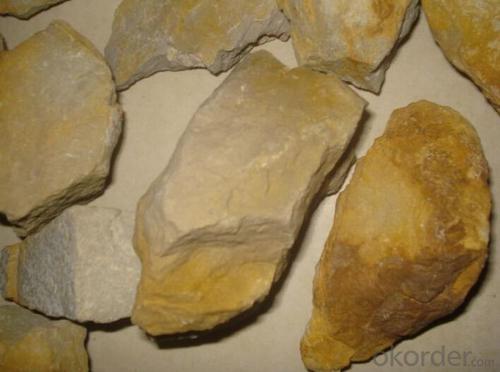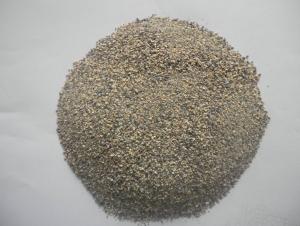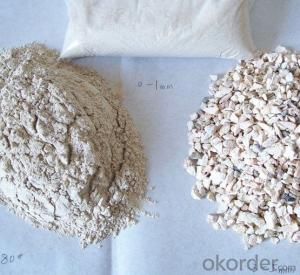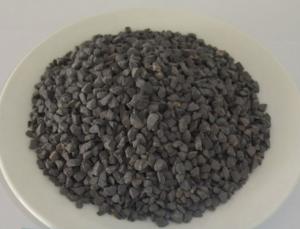Raw Materials for Refractory - Natural Bauxite Lump for Cement Industry in China CNBM
- Loading Port:
- Tianjin
- Payment Terms:
- TT or LC
- Min Order Qty:
- 20000 m.t.
- Supply Capability:
- 10000000 m.t./month
OKorder Service Pledge
OKorder Financial Service
You Might Also Like
1. Structure of Calcined Bauxite Description
Natural Bauxite Lump for Cement Indystry in China CNBM
Bauxite (aluminous soil; Bauxite) is also called the alumina or bauxite; main ingredients are alumina, hydrated alumina containing impurities, is an earthy mineral. The color is white or gray, brown and yellow or light red by iron. From 4 to 3.9 g/cm3 density, hardness, 1 ~ 3 is not transparent, very brittle, very difficult to melt. Insoluble in water, soluble in sulfuric acid, sodium hydroxide solution. Mainly used for aluminium, refractory material.
2. Main Features of the Calcined Bauxite
Natural Bauxite Lump for Cement Indystry in China CNBM
Calcined bauxite is one of the principal ore of aluminum. Calcined bauxite contains hydrous aluminum oxides and aluminum
hydroxides, formed through the laterization of aluminous rocks in tropical and subtropical areas .Calcined bauxite is obtained by calcining (heating)superior grade bauxite at high temperature (from 85OC to 1600C) .This removes moisture there. By increasing the alumina content,compared to an alumina content of about 57%to 58% in raw bauxite, calcined bauxite has an alumina content of 84%to88%.The heating is carried out in rotary kilns.
3. Calcined Bauxite Images
Bauxite Mineral Used for Aluminum Making Originated in China
4. Calcined Bauxite Specification
Natural Bauxite Lump for Cement Indystry in China CNBM
Rotary Kiln Calcined Bauxite SEMI L.F Specification : Al2O3 : 83.00 + % Fe2O3 : 3.5 % SIO2 : 5 To 6% Cao : 2.5% TIO2 : 4 % , Size : 0-1MM OR 1-3MM
Rotary Kiln Calcined Bauxite G.G.NO.1 Specification : Al2O3 : 80.00 + % Fe2O3 : 3.8 % SIO2 : 6 To 8% Cao : 2.2 To 2.5% TIO2 : 5 To 6 % , 0-1MM OR 1-3MM
Rotary Kiln Calcined Bauxite G.G No.2 Specification : Al2O3 : 78 % Fe2O3 : 4 TO 4.2% SIO2 : 8 To 9 % TIO2 : 6.00 % Cao : 2.50 % , Size : 0-1MM OR 1-3MM
Rotary Kiln Calcined Bauxite G.G No.3 Specification : Al2O3 : 75 % Fe2O3 : 4 TO 4.5% SIO2 : 9 To 11 % TIO2 : 5.00 % Cao : 3.00 % Size : 0-1MM OR 1-3MM
Or as per buyes requirements.
5.FAQ of Calcined Bauxite
Natural Bauxite Lump for Cement Indystry in China CNBM
1). Q: Are you a factory or trading company?
A: We are a factory.
2). Q: Where is your factory located? How can I visit there?
A: Our factory is located in ShanXi, HeNan, China. You are warmly welcomed to visit us!
3). Q: How can I get some samples?
A: Please connect me for samples
4). Q: Can the price be cheaper?
A: Of course, you will be offered a good discount for big amount.
- Q: Does anyone know the refractory temperature of fire-resistant glass?
- Ordinary glass will be completely liquefied in the furnace of about 1100 degrees for half an hour and will not deform below 600 degrees. toughened glass fire-resistant glass is the product of ordinary glass after being processed Glass will mainly burst after encountering fire. When unevenly heated or encountering sudden drastic changes in temperature, ordinary glass will burst if the sharp temperature difference is over 70-120 degrees and toughened glass will burst at 200 degrees. It is not yet clear of the bursting temperature for the refractory glass. (I hope this answer can help you!) Hope you adopt !)
- Q: What are the meanings of azs, 34% and ec in fused brick?
- The fused brick, also called zircon corundum brick, is shorted as AZS for three chemical components in Al2O3-ZrO2-SiO2 ternary diagram. I don't know the meaning of EC.
- Q: How to detect the acid resistance of refractory? Is there any standard? Thank you
- There is a standard. However, the range what you said is a little big, it's difficult for me to say. But though the scope is a bit big, it should be: You can check the industry standard network, to see whether you can check it.
- Q: In entering fire door, which material does well?
- About this, I personally advice you to take a look at the building materials market, where will be many options and comparativity would be much better.
- Q: The difference between refractory and thermal insulation material
- In simple terms, refractoriness is different. The refractoriness of refractory is high while that of insulation material is low.
- Q: how to divided the external wall thermal insulation materials fire rating
- Level A: Incombustible building material: It is a kind of material that almost does not occur burning. Level B1: Nonflammable building material: Non-flame material has good flame resistance. It is difficult to fire under the condition of open fire in the air or high temperature, and it is not easy to quickly spread, and when the combustion?source is removed, the combustion will stop immediately. Level B2: Combustible?building?materials: Flame material has a good flame resistance. In case of fire in the air or at high temperature, it will immediately burst into flames, and easily lead to the spread of fire, such as wooden column, timber roof truss, timber beam and wooden stairs. Level B3: Combustible?building?materials: It has no any flame resisting effects, and is easy to burn, so the fire risk is high.
- Q: Which are roofing fireproofing material?
- (1) Foamed concrete is a kind of fire-proof thermal inuslation matertial featured by good fire resistance and thermal insulation. Besides, it is also characterized by excellent sound proofing, penetration resistance, easy construction, safety and environmental protection without toxin and pollution. (2) Foam glass is featured by light weight, small heat conductivity coefficient and water absorbption, non-inflammability, fire resistance, high strength, no moulding, corrosion resistance, non-toxin and stable physical and chemical properties and thus widely used petroleum, chemical engineering and underground construction. It is also featured by thermal insualtion, heat/cold preservation and sound absorbption and thus can be used for thermal insulation of external wall and roof of civil builduing. Foam glass is featured by stable chemical property, easy to be processed and not easy to deforme, and durable. (3) With slag, basalt and other natural ore as the main raw material, rock wool, mineral wool and its products are made by high temperature melting into fiber, and then processing with binder. It has low thermal conductivity, fire resistance, easy construction and good effects of energy saving and thus is highly cost-effective. (4) With phenolic foam material as main material, phenolic resin plate is made by foaming thermoset phenolic resin. It is featured by light weight, fire resistance, no burning in the air, no smoking, non-toxin, no dropping and non-embrittlement and thus is an ideal thermal insulation material used in HAVC projects. Due to its high obturator formamen rate, low heat conductivity coefficient, good thermal insulation, water resistance and water vapor permeability, phenolic foam is an ideal thermal insulation material.
- Q: what is the specs of thermal insulation refractory slab ?
- Fireproof insulation specification is 1220 * 2420 1220 * 2420 * 8 * 9. HPL also known as the fireproof board is scientificly named thermosetting resin impregnated paper laminated wood, the abbreviation of which is HPL.Decorative high-pressure Laminate is fire-resistant building materials for decorative purposes. It is rich in surface color, texture and special logistics performance, widely used in interior decoration, furniture, kitchen cabinets, laboratory table, external walls.
- Q: What are the best refractory materials in 2,400 Celsius degree?
- It is the purpose that decides what kind of materials you should use. What you have said is 2,400 Celsius degree, right? It is about the fire resistance of the material or the required temperature of it?
- Q: Is it necessary for the frame of glass fireproof door to be crammed with fire-proof material?
- Close the door , and check if the gap is normal, whether the hole and the door leaf are in the same plane, and whether the door leaf has tendency to fall down. Fire resistance steel door——means that use a cold rolled steel sheet as door frame, door plank and framework, and stuff a door leaf with incombustible material.
Send your message to us
Raw Materials for Refractory - Natural Bauxite Lump for Cement Industry in China CNBM
- Loading Port:
- Tianjin
- Payment Terms:
- TT or LC
- Min Order Qty:
- 20000 m.t.
- Supply Capability:
- 10000000 m.t./month
OKorder Service Pledge
OKorder Financial Service
Similar products
Hot products
Hot Searches
Related keywords


























